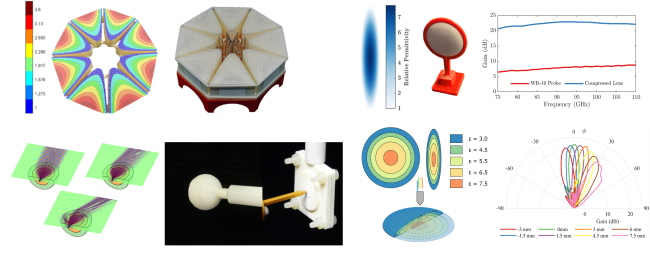Digital and Additive EM Manufacturing
The emergence of additive low-cost manufacturing techniques over the last decade has offered new opportunities for realising spatially varying devices typical of those designed using transformation optics. Our research has focused on developing novel 3D printing techniques for fabricating Gradient Refractive Index (GRIN) devices such as conformal lens antennas covering frequency bands from microwaves to THz. Various demonstrators developed with the industry include an 8-segment switched GRIN antenna with optimised radiation patterns, compressed Luneburg lenses with beam steerable radiation pattern at 84 GHz, and a beam steerable GRIN lens at 0.3 THz. All antennas can be fabricated using low-cost FDM printing with multiple dielectric filaments.
The centre is actively working on modern methods of manufacturing of microwave, mm-wave and THz antennas and devices. It includes additive manufacturing of devices in collaboration with other institution (University of Nottingham, Imperial College London, University of Leeds) as well as investigation of digital manufacturing at the site, using novel facilities, precise 3-D nano printing, etc.

3D printed gradient-index antennas from transformation optics

